Top Landmarks in Ephesus
The most important places in Ephesus; Temple of Artemis, St. John's Basilica, Isa Bey Mosque, Seven Sleepers Cave, Ephesus Museum, Ayasuluk Castle and House of Virgin Mary. You can reach more detailed information with the interactive map of Ephesus below.
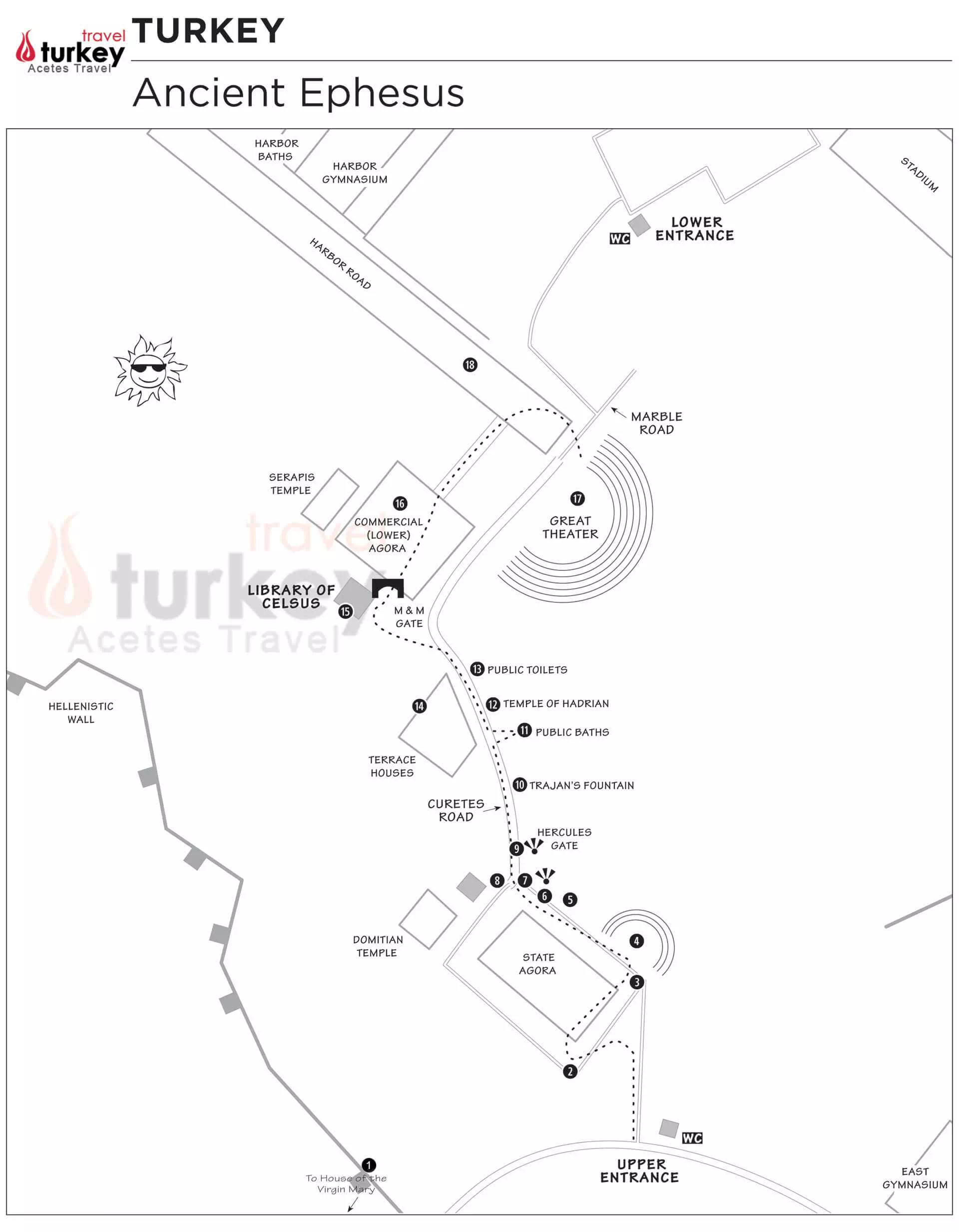
-
More

The Virgin Mary House
House of Virgin Mary, which is declared an official pilgrimage center for the Christian world, to become tens of thousands of Catholic Christian pilgrims.
Close -
More

The State Agora
The ruins that can be seen today, one of the two most important rendezvous spots in Ephesus, were once the state agora, dating from the first century.
Close -
More

Basilica Stoa
During it's day it was considered to be one of the most magnificent buildings in Ephesus.
Close -
More
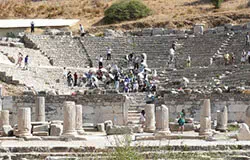
Odeon, Ephesus
The Odeon, built into the south slope of Panayır Dağı, is like a small theater. Its location north of the state agora and next to the prytaneion suggests that it also fulfilled the function of a bouleuterion (meeting place of the council of elders, or senate).
Close -
More
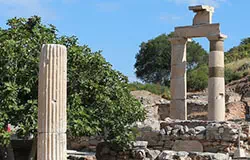
Ephesus Prytaneion
After the Temple of Artemis, the prytaneion, to the northwest of the state agora, was the most important structure in the city. The holy fire of Hestia burned continuously in it.
Close -
More
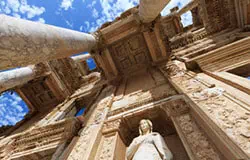
Ephesus
Ephesus which was established as a port, was used to be the most important commercial centre. It played a great role in the ancient times with its strategic location. Ephesus is located on a very fertile valley.
Close -
More
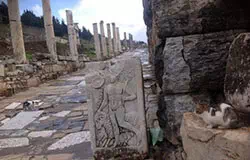
Sacred Way at Ephesus
The Road between the Prytaneum and the Square of Domitianus was known as the Sacred Walkway.
Close -
More

Domitian Square
Domitian Temple gave this area its name. It was the first temple to be built in the name of an emperor (81 - 96A.D.) and located next to the Domitian Square. The Polio Fountain and Memmius Monument stands opposite of each other.
Close -
More
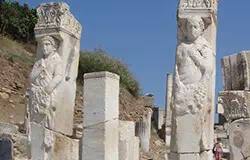
The Gate of Hercules
The door of Hercules. This is the most beautiful photo point of Ephesus. The door of Hercules is a gate with two columns. Hercules mad with god chief Zeus' Hera and then killed his wife and child wanted to chop his own soul, but his friends had stopped.
Close -
More

Fountain of Trajan
It was constructed for the honor of Emperor Trajan, and the statue of Trajan stood in the central niche on the facade overlooking the pool.
Close -
More

Public Baths
The bath was a large part of communal life in the Roman Empire, much like a community center.
Close -
More
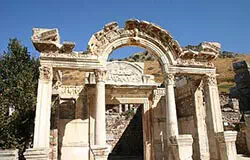
Temple Hadrian
The facade of the temple has four Corinthian columns supporting a curved arch, in the middle of which contains a relief of Tyche, goddess of victory.
Close -
More
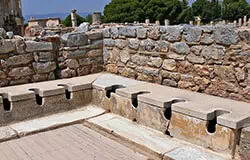
Latrines Ephesus
In the centre, there is an uncovered pool and the toilets are aligned along the walls.
Close -
More

Terrace House
Also called as "the houses of rich", important for the reason give us information about family life during the Roman period. They were built according to the Hippodamian plan of the city in which roads transected each other at right angels.
Close -
More
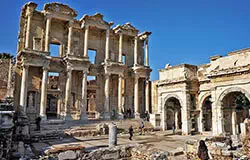
Library of Celsus
This library is one of the most beautiful structures in Ephesus. It was built in 117 A.D. It was a monumental tomb for Gaius Julius Celsus Polemaeanus, the governor of the province of Asia.
Close -
More
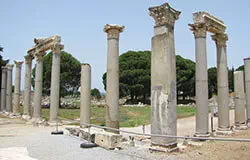
The State Agora
The ruins that can be seen today, one of the two most important rendezvous spots in Ephesus, were once the state agora, dating from the first century.
Close -
More
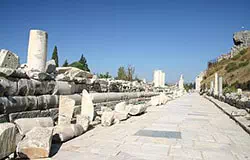
Ephesus Harbor Road
It is the road starting form the great theatre to the Celsus Library, which is the portion of the sacred way that leads past Panayirdagi to the Temple of Artemis.
Close -
More
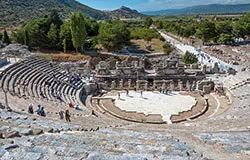
Great Theatre in Ephesus
This is the most magnificent structure in Ephesus ancient city. The Great Theatre is located on the slope of Panayir Hill, opposite the Harbor Street, and easily seen when entering from the south entrance to Ephesus.
Close